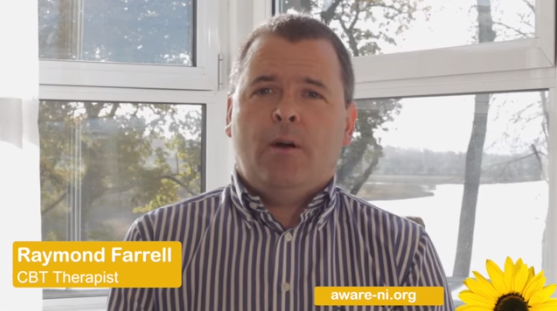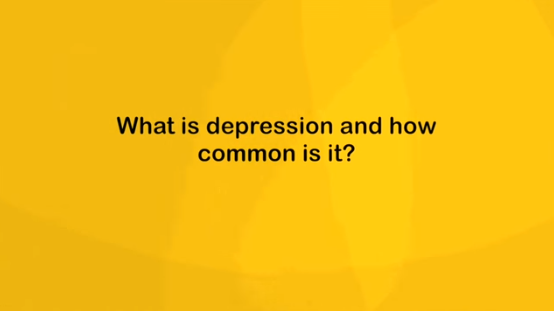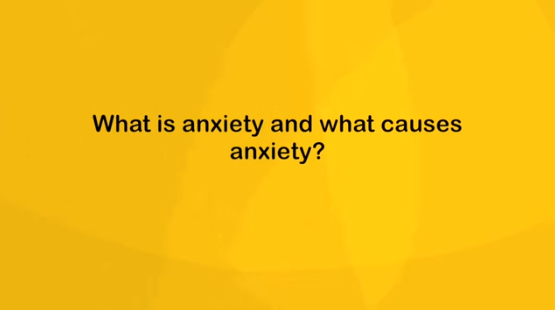How to Make (and Keep) a New Year's Resolution
Mental Health / Men's Health / Women's HealthAre you making a resolution in the new year? Warning: More than half of all resolutions fail, but this year, they don’t have to be yours. Here’s how to identify the right resolution to improve your life, create a plan on how to reach it, and become part of the small group of people that successfully achieve their goal.
Pick the Right Resolution
You’ll give yourself your best shot at success if you set a goal that’s doable — and meaningful too. According to the time management firm FranklinCovey, one third of resolutioners don’t make it past the end of January.
A lot of these resolutions fail because they’re not the right resolutions. And a resolution may be wrong for one of three main reasons:
- It’s a resolution created based on what someone else (or society) is telling you to change.
- It’s too vague.
- You don’t have a realistic plan for achieving your resolution.
Your goals should be smart — and SMART. That’s an acronym coined in the journal Management Review in 1981 for specific, measurable, achievable, relevant and time-bound. It may work for management, but it can also work in setting your resolutions, too.
Create Your Plan
Your end goal won’t just magically appear. Here are ways to figure out how to get there. Because you won’t just wake up and change your life, you not only need a plan for what to do, but also for what roadblocks you’ll come across along the way.
If you’re trying to form or break a habit, Mr. Duhigg suggested breaking down that habit into its three parts: a cue, a routine and a reward.
For example:
- Bad Habit: I check Twitter too often.
- Cue: I feel isolated.
- Routine: I check Twitter.
- Reward: I feel connected.
Way to change the behaviour: Instead of checking Twitter, get up and talk to a colleague.
What about if you have a really bad health habit?
- Bad Habit: I smoke.
- Cue: I’m tired.
- Routine: I smoke a cigarette.
- Reward: I’m stimulated.
Way to change the behaviour: Instead of smoking a cigarette, replace the stimulus with something else, like coffee.
Make it Personal
Of course, the cue and routine for a common bad habit, like smoking, is as individual as the person trying to quit. You may need to do some work to figure out what the real cue for the habit you want to change is, and then what will replace it.
Both the cue and reward should be easy and obvious. Let’s look at one example in depth. For running, a cue could be just putting on your running clothes, even if at first you don’t do anything after that. “Oftentimes when people have never exercised before, and researchers are working with them to get them to exercise, the first week is: You should just put on your running clothes. Don’t even leave the house,” Mr. Duhigg said. Then add the first step in the new routine: Put on running clothes, walk around the block. “You want to create an environment where you’re making very slow progress that is guaranteed to deliver victories to you,” he said.
And then the reward at the end of the action must be an actual reward, too, so that it reinforces the routine and makes you want to do it. “Otherwise, your brain won’t latch onto the behaviour,” Mr. Duhigg said.
For example, if you run in the morning then rush through your shower and your commute, you might end up at your desk sweaty, so in effect “you’re punishing yourself for running,” he said. Your brain will pick up on that punishment and push back against the intended activity. Your resolution didn’t necessarily fail because you failed, but because you were trying to do it at the wrong time, which resulted in a punishment instead of a reward at the end. For running, a reward can be a nice long shower, a piece of chocolate or indulging in a feeling of pride, which can be reinforced by tracking your running in a journal and writing that down.
Leap Over Resolution Hurdles
No one’s perfect, and your quest for your resolution won’t be either. But you can get back on track.
What’s the best way to tackle problems that arise on your way to success? First, remember no matter how well you plan, change is hard. “You’re up against a part of yourself that’s never going to change. It’s always going to push at you in certain directions that are unhealthy. You’re going to have to really create something step by step in order to manage it,” Dr. Bennett said.
So before hurdles get in your way, make sure you have a plan to jump over them. Here are a few common problems people face in achieving their goals:
It’s too much and I have so far to go. A perceived lack of progress can be frustrating. Dr. Wallin suggested focusing on whatever the smaller number it is: your progress, or how much you have left to do.
Try to be positive, but realistic. Yes, imagine the goal or positive fantasy, but then look at what obstacles are in the way and how to get over them. Dr. Oettingen calls this technique W.O.O.P. — Wish, Outcome, Obstacle, Plan.
- Wish: What do you want?
- Outcome: What would the ideal outcome be? What will your life look like when you hit your goal?
- Obstacle: You know yourself. What will try to stop you? What has sidelined you before?
- Plan: How will you get around it?
Answering these questions doesn’t need to take a lot of time. Dr. Oettingen suggested three to five minutes to start; make sure you’re in a place where you won’t be interrupted.
I can’t stick to this routine. Maybe your routine simply isn’t flexible enough.
In a 2015 study, researchers paid two groups of people to go to the gym for a month. The first group was paid if they started a workout within a two-hour window they chose in advance. The second group was paid whenever they went to the gym. After that month, researchers found that the second group was more likely to stick with the gym habit.
The takeaway? Set a plan but be flexible when life gets in the way. “It’s critical to learn how to have a backup plan rather than just throw your hands up and give up,” said Dr. Milkman, who conducted the study.
I’m getting too much outside pressure. This could be a sign that you’re trying to change for the wrong reasons. Have a talk with yourself about whether you want to make this change for you or because someone else told you to. “Always try to put a beat in there where you consult with yourself,” said Dr. Bennett.
Find a Community
You don’t need to do it alone, especially if your resolution starts in the new year when you’ll have plenty of company in trying to make a life change.
State Your Goal
You don’t necessarily need to find a special group, but you should let a person or two know that you’re setting a goal. “Tell them your plan and ask them to hold you accountable,” Dr. Milkman said. That way it’s a public commitment, and you might feel like you have a community supporting you that wants to see you succeed.
You can also use social media to make your goal public, like posting on Facebook that you will learn to cross-stitch by July 1, along with updates of your hobby in progress.
Stand to Lose Something
Namely, money. That could mean you give your brother $100 and you can’t get it back until you reach your goal. Or, for something more formal and formatted, Dr. Milkman recommends stickK.com, a website where you make a financial pledge that you’ll lose if you don’t reach your goal.
“If there’s money on the line, the consequences are much larger,” Dr. Milkman said. “There are really stakes in the game.”
Find Likeminded Resolvers
You may find online support groups and forums (on Facebook or not) full of people who are reaching for the same goal. But real-life groups can help too. Mr. Duhigg said that one reason Alcoholics Anonymous (and other Anonymous groups) works for a lot of people is, first because it’s a community, but also because there’s a belief in something else that isn’t necessarily God. For example, people have used a belief in a general higher power, even in nature, to help them achieve their goals.
Cut Back on Bad Influences
While some friends and family want to help, others can hold you back, especially if your resolutions to cut back on a bad behaviour means you can’t participate in that behaviour with them or they see your wanting to change as a rejection of the way they live their lives.
For example, if you are trying to quit smoking and getting ribbing from a group of people you usually smoke with at work, try this: “I really enjoyed our time outside, but I’m really sorry that I have to back off now because stopping smoking is so important to my health. Hanging out with the gang during the smoke sessions would be more than I could tolerate. Again: My regrets.”
If You Miss Your Goal
You didn’t fail. You’re your own experiment, so here’s what to try on your second, third or 20th attempt.
First and foremost: If you fail at your resolution attempt, don’t beat yourself up, and know you’re not alone. After all, Dr. Milkman points out, “we struggle to do the things that we know are good for us because we give into impulses for instant gratification.”
Feel Free to Start Fresh
Want to try again? Remember, a resolution doesn’t need to be tied to New Year’s. “It can be following a weekend, following a birthday,” she said.
So, if you missed your New Year’s goal, you can start again tomorrow, on a Monday, after Valentine’s Day or any marker that means something to you, just as long as you’re ready to give it another go. It won’t guarantee success, but you don’t need to wait until another year comes around on the calendar to give it another go!
Content sourced from The New York Times (nytimes.com).























































